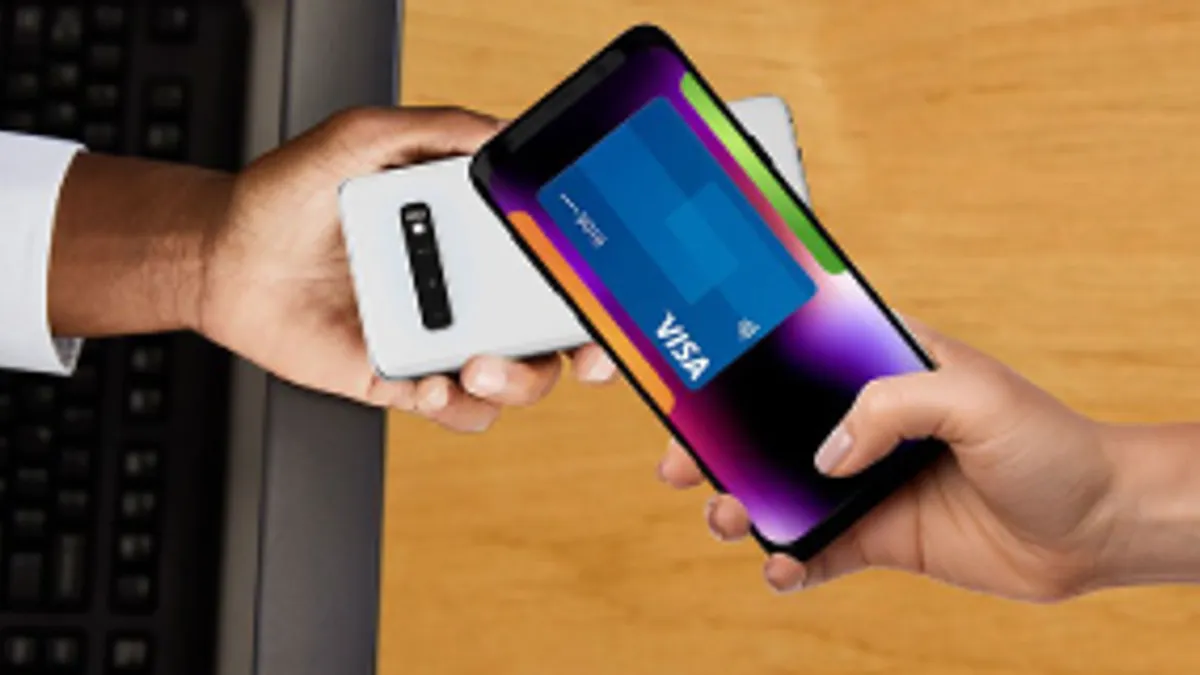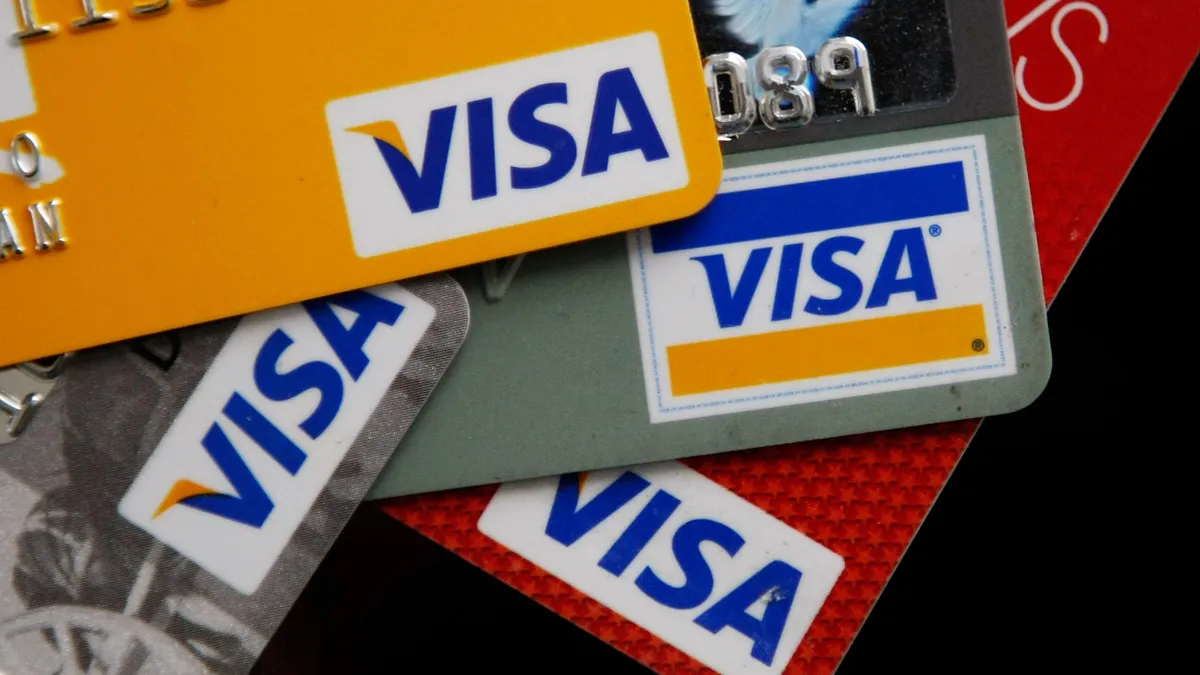Dive Brief:
-
Card network giant Visa launched a tap-to-phone payment pilot for U.S. merchants, enabling them to accept tap payments via their smartphones. The pilot will be initially launched in Washington D.C. and then in another five major cities in a six-city small and medium-sized business initiative, the June 16 press release stated.
-
The tap-to-phone feature allows merchants to turn their android phones into point-of-sale (POS) devices and accept payments from near-field communication (NFC) enabled cards and mobile wallets. Merchants can accept PIN-authentication and PIN-free payments with a Visa-approved mobile payment application.
-
“Tapping to pay, contactless checkout and picking up online purchases in-store all became more commonplace – and expected – during the pandemic,“ Mary Kay Bowman, head of global buyer and seller solutions at Visa, said in the press release. “Small businesses pivoted where they had to in order to upgrade their digital operations to meet those new expectations, often with few resources.”
Dive Insight:
Visa launched the new program in the U.S. to provide small and medium-sized merchants with the ability to use their android phones and an app to accept card payments, without additional hardware, according to the June 16 press release.
Merchants can download the Visa app and enroll their business with Visa to accept payments. Rival Square, another payments company, also has a mobile POS payment option, but it comes with hardware and software integration.
The card network company is partnering with ZmBIZI, a mobile app and technology company, to provide the Visa-approved mobile application required to accept payments. The Visa product has previously been available in 30 countries including the U.K., Russia, India, Brazil and Italy since last year and is making its debut in the U.S. now.
A Visa spokesperson declined to comment on why Visa is only now introducing the product in the U.S. after placing it in so many other countries.
The payment option will be piloted in Washington D.C., “one of the U.S. cities with the highest percentage of Black-owned” under Visa's banner of trying to revitalize small and medium-sized businesses (SMBs), the press release stated. The company is offering the service initially at 50 businesses in Washington D.C. and will be expanding it to Atlanta, Chicago, Detroit, Los Angeles and Miami, and to all U.S. merchants in the coming months.
Visa plans on “testing and learning from the 50 sellers” in D.C. that are using its payment option, the Visa spokesperson told Payments Dive in an email. The company aims to decrease friction, limit touch during the transaction and eliminate the need for cash, according to a October 2020 press release.
Customers can use physical cards enabled with NFC chips or digital cards to make payments via its new offering.
The San Francisco-based company aims to aid SMBs that are reopening after the pandemic severely affected businesses across the globe. The new service is directed at small- and micro-businesses, "especially those that are heavily dependent on cash today,” the Visa spokesperson said.
Cash transactions fell by 69% year-over-year globally in 2020 as consumers pivoted to digital payment channels due to the pandemic, according to a McKinsey and Company’s Global Payments report of 2020. Only 28% of all transactions were done in cash in 2020 in the U.S. compared to 51% in 2019, the report stated.
“Nearly half of the consumers (48%) in the U.S. said they would not shop at a store that offers only payment methods requiring contact with a cashier or shared machine like a card reader,” making it essential for businesses to offer alternative payment methods, according to a Visa study published last year.
NFC payment use has increased over the past year. Digital commerce spending via NFC mobile retail payments, QR code payments and digital banking bill payments are expected to reach $11.6 trillion by the end of 2021, compared to $10.5 trillion in 2020, according to a recent Juniper Research report. Mobile commerce transactions will jump to 79% of all digital commerce transactions by 2025 compared to 71% in 2021 the report stated.











